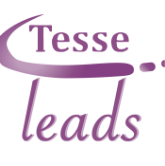 I love the line in Pirates of the Caribbean where one of the actors alluded to policies that needed to be adhered to by the Pirates. The other Pirate retorted, ‘they are not so much policies; they are more like guidelines’. With this in mind, I usually find it helpful to reflect on rules of the road that can build and sustain effective governance. Six of these listed have been of immense worth as I walk the journey with boards.
I love the line in Pirates of the Caribbean where one of the actors alluded to policies that needed to be adhered to by the Pirates. The other Pirate retorted, ‘they are not so much policies; they are more like guidelines’. With this in mind, I usually find it helpful to reflect on rules of the road that can build and sustain effective governance. Six of these listed have been of immense worth as I walk the journey with boards.
Rule 1: Address Board/Staff relationships
Lack of clarity about what is governance and management can plague even the best of boards. Effective governance emerges by board members, the Chief Executive and the Senior Executive Board members agree the nature of the contact between trustees and senior staff. This level of clarity helps them to recognise appropriate boundaries and how they can work better together. More boards are introducing confidential sessions attended by board members only. These sessions are useful where the board members need to discuss their performance and matters that keep them awake at night with a view to working better as a strategic team.
Rule 2: Hold High Quality Board Meetings
Planning agendas, presenting quality board papers can lead to board members focusing on strategic issues and dealing with the matters that really matter. Meetings facilitated by able chairs leads to effective and efficient meetings that board members do not want to miss. Away days can be an opportunity to explore emerging strategic themes in sufficient depth.
Rule 3: Manage Electronic Communications
A recent OnBoard survey shows that 50% of organisations are communicating using electronic methods. The charity should ensure it has the necessary power to make formal decisions by electronic means. Clear rules of the road and ground rules will guide individuals and groups as they connect with each other. Email traffic between meetings should flow effectively and protocols can help to support the effective use of electronic communications.
Rule 4: Utilise Social Media
The quality of good governance can be enhanced by tapping into social media and shaping a social media strategy and policies that supports the work of the organisation. . The OnBoard Social Media survey showed that 90% of organisations are using Twitter and Facebook to raise awareness of the work they are doing. 75% of individuals are using LinkedIn to develop professional connections. Boards need to be part of this development and not stand on the side lines.
Rule 5: Review Board Effectiveness
Effective boards need to reflect on their effectiveness. Where are they excelling? Where are they not doing so well? What activities does the organisation need to start doing, keep doing? Is the organisation supported by an able board moving in the right direction for the long term? Really small changes can make a difference. Trustee appraisals provide a way to supporting board members to contribute meaningfully to the organisation.
Tip 6: Learn from Mistakes
Lynn McGregor in her book the “Human face of Corporate Governance” reminds us that the human face is always changing. Sometimes it is happy and sometimes it is sad. Macho images can hide real love and concern. The human face brings a wealth beyond prescriptive approaches. The challenge is to explore and focus on what it is to be truly human when governing organisations. The Charity Commission in ‘Hallmarks of an effective charity’ steers charities towards continuous improvement that highlights a willingness to learn from mistakes and to avoid looking for scape goats when things go wrong. High performing boards celebrate success and build in time for contribution, appreciation and recognition.
If interested in receiving a FREE REPORT ON BOARDROOM BEHAVIOURS Click here to subscribe to my mailing list
